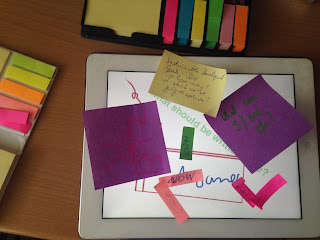Slowetwiam Inspiration

When I first came up with this idea to organize a slow Twitter chat that would last for five full days, 24 hours a day, at a time when most teachers from European schools are still on holidays, I had absolutely no clue how it would go! But I liked the idea and proposed it to Irene Pateraki, eTwinning CSS Pedagogical and Monitoring Manager, who gave me her full support. Two weeks ago the word slowetwiam didn't exist. Now, it is a lively buzzword that has attracted teachers from Europe and beyond to learning and sharing on Twitter. More than 1,000 tweets, retweets and replies have been sent out by 90 teachers over the past 5 days! Some teachers actively participated from the beginning to the very end, while others chimed in whenever they could. Our tweets have been delivered to Twitter timelines more than 2,283,000 times! We had our ups and downs during the chat: We discussed five topics and inspired each other with so many great ideas. #slowetwiam :a gre...








